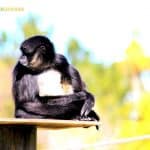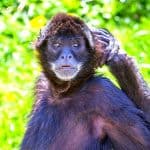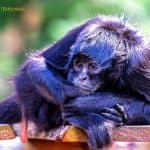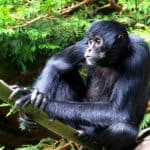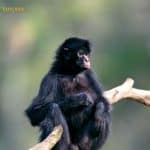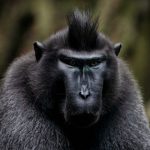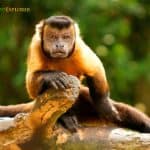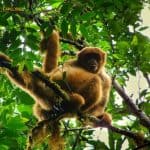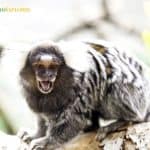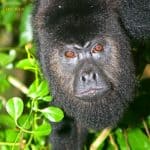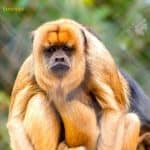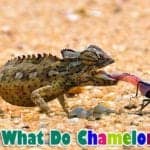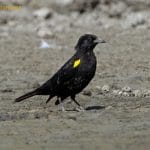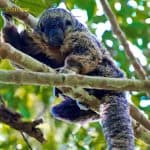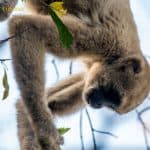spider monkeys - search results
If you're not happy with the results, please do another search
Spider Monkeys
Spider monkeys comprise 7 New World primate species adept at brachiating through Central and South American rainforest canopies, endangered due to habitat destruction. Their spindly prehensile tails, flexible shoulder joints, hook-like fingers and fusion-fission social groups represent unique adaptations for foraging canopy fruits.
What Do Monkeys Eat?
Monkeys are divided into two groups; the Old World and New World monkeys. Explore what do monkeys eat, monkeys diet by types and what eats monkeys here.
Red Monkeys
Red monkeys include over 50 species of primates from Asia, Africa and the Americas that exhibit signature red coloration on their fur, skin or body parts adapted for forest camouflage and heat regulation while also communicating social moods.
Marmoset Monkeys
From the lush Amazon rainforests to the arid caatinga scrubs of northeastern Brazil, miniature marmoset monkeys swing through diverse New World landscapes. Explore all 24 species of marmoset monkeys here.
Yellow Monkeys
Yellow Monkeys: Monkeys exhibit a dazzling array of fur colors and patterns, but a select group stands out for their unique yellowish hues blending into tropical forest backdrops. Yellow monkeys include both New World primates like spider monkeys and capuchins and Old World species such as macaques, langurs and gibbons.
Albino Monkeys
Albino monkeys, also known as monkeys with albinism, lack pigmentation in their skin, hair, and eyes. Discover more about these unique creatures and their genetic condition.
Costa Rica Monkeys: A Journey into the Rich Biodiversity!
Explore the diverse world of Costa Rica's monkeys in our comprehensive guide. Learn about the four unique species, their habitats, threats, and conservation efforts. Discover tips for monkey spotting during your visit to this biodiversity hotspot.
Mexico Monkeys
Explore the unique world of Mexico's endemic primates, the Mexican Spider Monkey and the Mexican Howler Monkey. Learn about their habitats, behaviors, cultural significance, and conservation efforts to protect these endangered species.
Monkeys Starting with W
Explore all monkeys from the world of primates that start with the letter W, including Wolf’s Mona Monkey, White-headed Langur, West Javan Langur, White-bellied Spider Monkey, and more.
Monkeys Starting with V
Explore all monkeys from the world of primates that start with the letter V, including Vervet Monkey, Vanzolini’s Bald-faced Saki, Variegated Spider Monkey, Vieira’s Titi, and more.
White-cheeked Spider Monkey
The white-cheeked spider monkey (Ateles marginatus), also known as the white-whiskered spider monkey, is a New World monkey native to the Amazon Basin of central Brazil.
Variegated Spider Monkey
The Variegated spider monkey or brown spider monkey (Ateles hybridus) is an endangered species of spider monkey, a species of New World monkey endemic to the forests of northwestern Venezuela and northern Colombia.
Panamian Monkeys
Panama is home to 8 species of New World monkeys, which comprise 6 genera. Examples of these species include the Panamanian night monkey (Aotus zonalis), the brown-headed spider monkey (Ateles fusciceps), and the mantled howler monkey (Alouatta palliata).
Old World Monkeys Vs. New World Monkeys
Old-world and New-world monkeys are two types of monkeys within Primates. Explore all differences between them from all aspects here.
Types of New-World Monkeys
The term “New World monkey” is a broad label that refers to any species that falls under one of the five taxonomic families of the Ceboidea superfamily: Cebidae, Callitrichidae, Atelidae, Pitheciidae, and Aotidae. Explore all New-World monkeys and their characteristics.
White-bellied Spider Monkey
The white-bellied spider monkey (Ateles belzebuth), also called the long-haired or white-fronted spider monkey, is an endangered species of spider monkey, a species of New-World monkey. These arboreal monkeys spend most of their time in the canopy. They rarely go down. When they do, they drink water, eat dirt, traverse a treeless area, or run away from an aggressive opponent.
Geoffroy’s Spider Monkey
Geoffroy's spider monkey (Ateles geoffroyi) also called the Central American spider monkey or black-handed spider monkey, is a species of spider monkey. The species name geoffroyi is honored by Étienne Geoffroy Saint-Hilaire, a French naturalist. The Geoffroy's spider monkey consists of five recognized subspecies residing in various parts of Central America and Mexico. These include the Hooded spider monkey (A. g. grisescens) in southern Mexico, the ornately-patterned Ornate spider monkey (A. g. ornatus) in Costa Rica and Panama, the Yucatan spider monkey (A. g. yucatanensis) in the Yucatan Peninsula, the Mexican spider monkey (A. g. vellerosus) in Veracruz, and the nominate Nicaraguan spider monkey subspecies (A. g. geoffroyi) found in Nicaragua, Honduras and northern Costa Rica.
Black-Headed Spider Monkey
The black-headed spider monkey (Ateles fusciceps) is a species of New-World monkey native to Central and South America. The species name "Ateles" is derived from the Greek word "ateleia" meaning imperfect or incomplete. It was likely chosen because these monkeys do not have a thumb. There are 2 additional sub-species of black-headed spider monkey namely Brown-headed spider monkey (Ateles fusciceps fusciceps) and Colombian spider monkey (Ateles fusciceps rufiventris).
Black Spider Monkey
Ateles paniscus, the black spider monkey, is one of three sub-species of spider monkeys. Aside from the face, feet, and hands, they are covered in jet-black hair longer than a typical primate. Of all the Ateles species, Ateles paniscus is the largest.
Peruvian Spider Monkey
Peruvian spider monkeys, like other Ateles species, have a prehensile tail that can be used to facilitate brachiation. Typically, Peruvian spider monkeys have completely black fur and complexions, unlike the lighter red-faced black spider monkey.
Black Monkeys
Explore the intriguing world of black monkeys in our comprehensive guide. Discover their species, unique traits, habitats, and survival tactics.
334 Types of Monkeys
Monkeys are classified into two main groups: Old-world monkeys and New-world monkeys. Explore all 334 different types of monkeys and their facts here.
Top 27 Types of Monkeys Live In Rainforest
Rainforests are biomes that have a rich flora and fauna. Animal species diversity is highest in the rainforests than anywhere else on earth. This article discusses 27 rainforest monkeys that are found in different rainforest regions of the world.
What Do Spiders Eat?
Spiders are arthropods, classified in class Arachnida. Explore what do spiders eat, how often do spiders eat, what eats spiders & all spider diet-related info.
Brown Weeper Capuchin
The brown weeper capuchin, or Venezuelan brown capuchin, is a species of graceful capuchin monkey native to Venezuela. Unlike spider monkeys, brown weeper capuchin monkeys can't hang by their tails because they cannot support their body weight.
Southern Muriqui
The southern muriqui or woolly spider monkeys (Brachyteles arachnoides) are scattered across southeastern Brazil, from Bahia north to Sao Palo south. The southern muriqui is one of the largest primates in South America, with males weighing around 15 kg and females around 12 kg.
Sierra De Perijá White-fronted Capuchin
The Sierra de Perijá white-fronted capuchin monkey (Cebus leucocephalus) is a species of gracile capuchin monkey native to Venezuela and Colombia. The Sierra de Perijá white-fronted capuchin range is restricted to northwestern Venezuela and northern Colombia forests.
White-eared Titi
The white-eared Titi, Plecturocebus donacophilus, also known as the Bolivian gray Titi or Bolivian Titi, is a marmoset species, a New World monkey endemic to eastern Bolivia and a region of western Brazil.
Siamang Gibbon
The siamang gibbon (Symphalangus syndactylus) is a black-coated arboreal gibbon endemic to the forests of Thailand, Malaysia, and Indonesia. It is the only species in the genus Symphalangus. The siamang's body is perfectly adapted to a life of swinging from branch to branch (also called brachiation).
Yucatan Black Howler
The Yucatan black howler, also called the Guatemalan black howler or Central American black howler, is a New-World monkey native to Central America. The Yucatan black howler monkey is the largest species of howler monkey and among the largest monkeys in the New-World.
Brown Howler Monkey
The brown howler monkey, also called the brown howler monkey, is a species of New World monkey that lives in the forests of southeastern Brazil and northeastern Argentina. Despite the common name "brown howler", its color is remarkably variable, with some individuals mainly appearing black or reddish-orange.
Top 7 Tropical Rainforest Animal Adaptations
The competition for food and resources in tropical rainforests is intense. Explore the 7 tropical rainforest animal adaptations that allow them to survive.
What Animals Live In Rainforests?
Discover the incredible biodiversity of the tropical rainforest. Dive deep into the habitats of rainforest animals, from the elusive jaguar to pink-toe tarantulas.
What Do Chameleons Eat?
Chameleons are unique animals considered to have originated from old-world lizards. Learn what chameleons eat by their types, how often & what eats them.
Blooming Texas: 25 Gorgeous Native Flowers Revealed!
Texas is a large state with its own floristic region, having more than 5,000 species of native flowering plants. Because of its diverse landforms, Texas offers many famous blooms for visitors and residents. Explore the top 25 Texas flowers and their characteristics.
85 Different Types of White Flowers For Your Garden!
Discover the captivating world of the top 85+ white flowers, from the iconic Lily of the Valley to the lesser-known Snowball Viburnum. Explore their enchanting beauty, rich symbolism, and fascinating scientific facts in this comprehensive guide.
Yellow-winged Blackbird
The yellow-winged blackbird (Agelasticus thilius) is a medium-sized songbird across much of South America. Males are jet black with bright yellow shoulder patches, while females are streaky brown.
Gray’s Bald-faced Saki
Gray's Bald-faced Saki (Pithecia irrorata), also known as Rio Tapajós saki, is a New World monkey native to South America. These monkeys are renowned for being reclusive because they avoid humans and quiet nature.
Northern Muriqui
The northern muriquí (Brachyteles hypoxanthus) is an endangered species of woolly spider monkey or muriquí endemic to Brazil. When searching for fruit and leaves in tall trees, these monkeys use their tails for support.
Top 15 Biochemistry Discoveries of 2019
Modern methods of analysis & research have significantly changed the way biochemical studies operate. Here are the top 15 biochemistry discoveries in 2019.
What Do Jaguars Eat?
Jaguars are enormous cats found mostly in north, south, and central America. Explore what do Jaguars eat, types of Jaguars, and what eats Jaguars & more.
What Do Snakes Eat?
Snakes are strict carnivores. Learn what do snakes eat, snakes diet by types, how do snakes hunt, what eats snakes, and how often snakes eat.
15 Best Zoos in the USA
Zoos serve as a home for numerous animals. It is no denial that the United States is a home to some of the world-class zoological parks in the world. To help you choose the perfect (and possibly the nearest) zoo to visit, here are the top 15 best zoos in the US with direct website references.
Branches of Zoology
Here are the different branches of zoology and their definitions. These sub-disciplines study the anatomy and physiology of all living & extinct animals. Explore each zoology division in detail here (study of different animals).
















